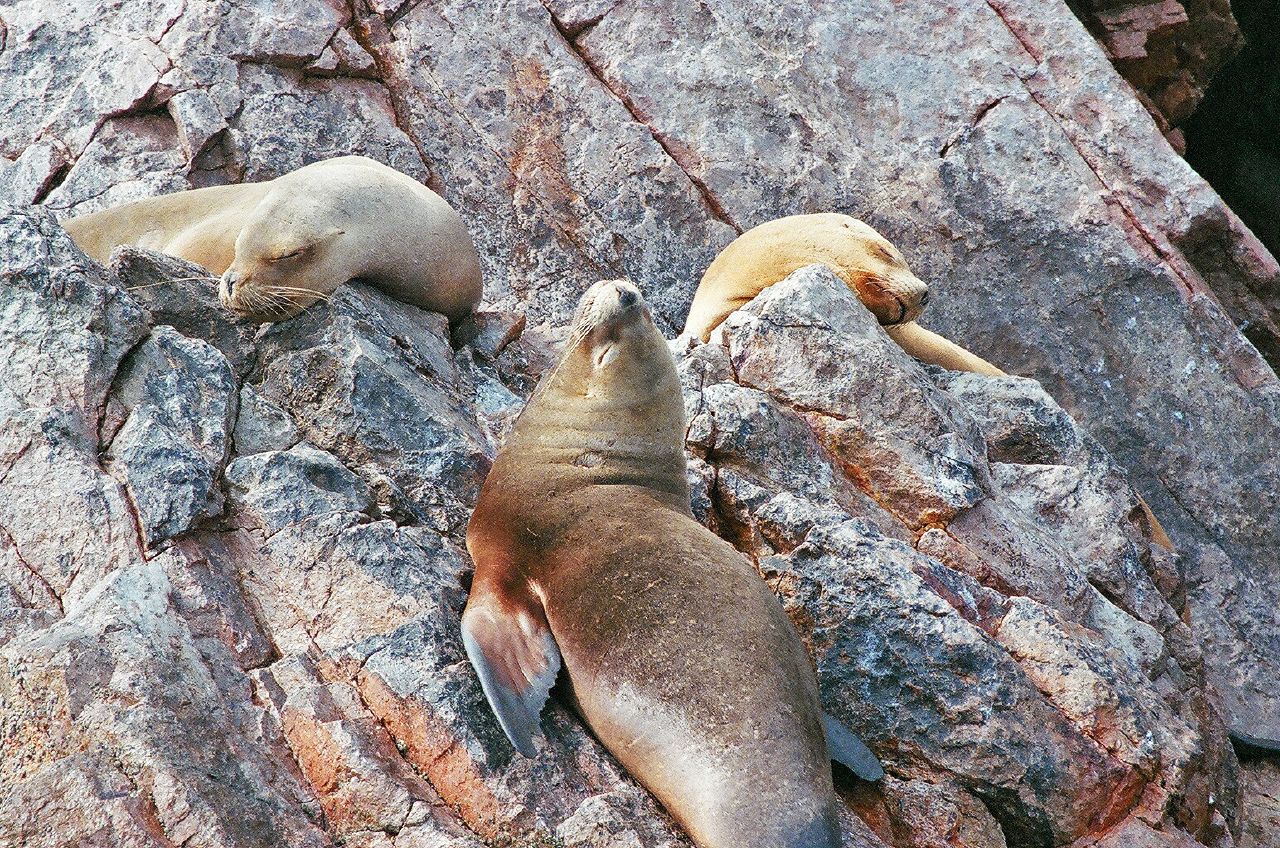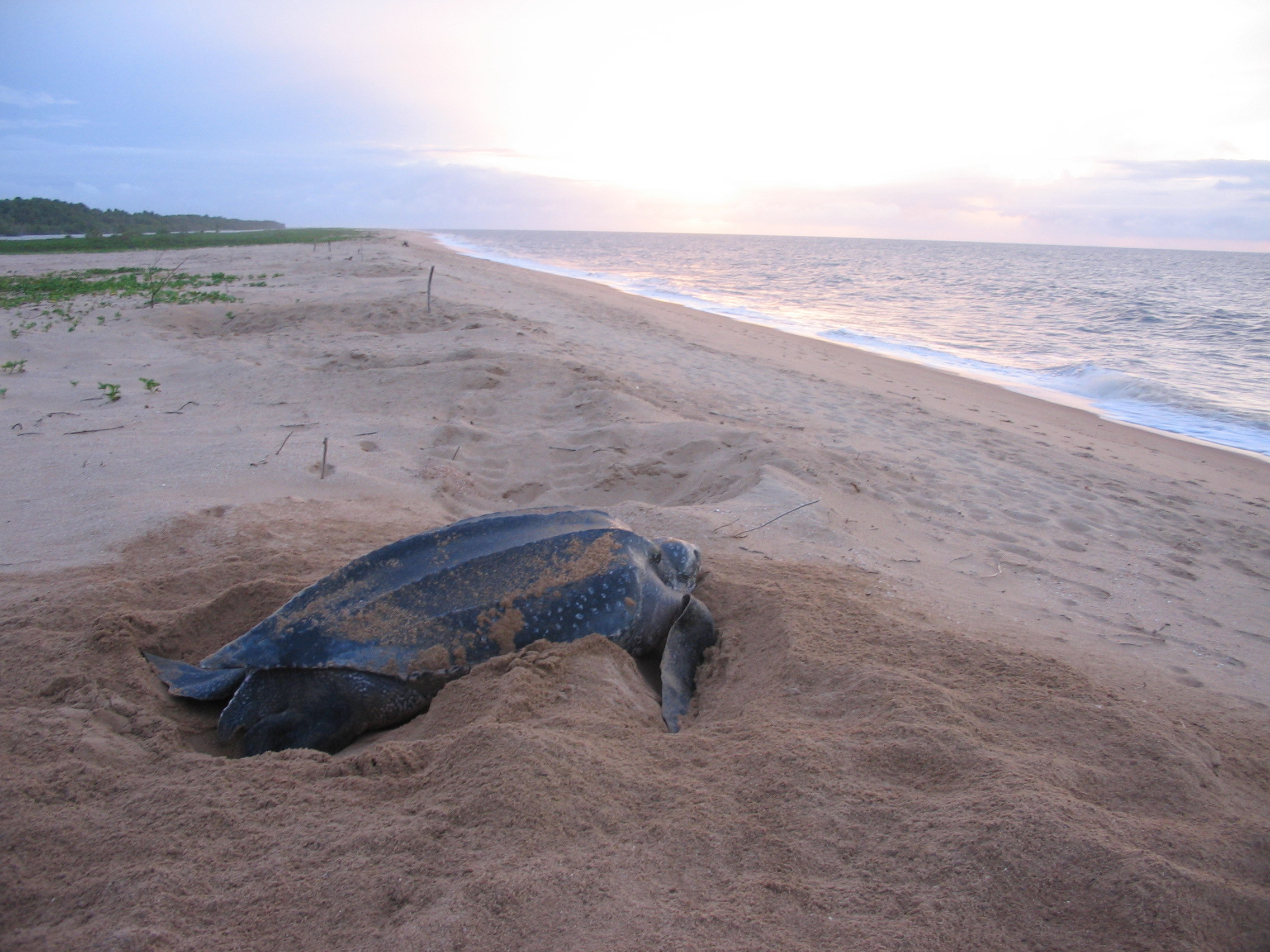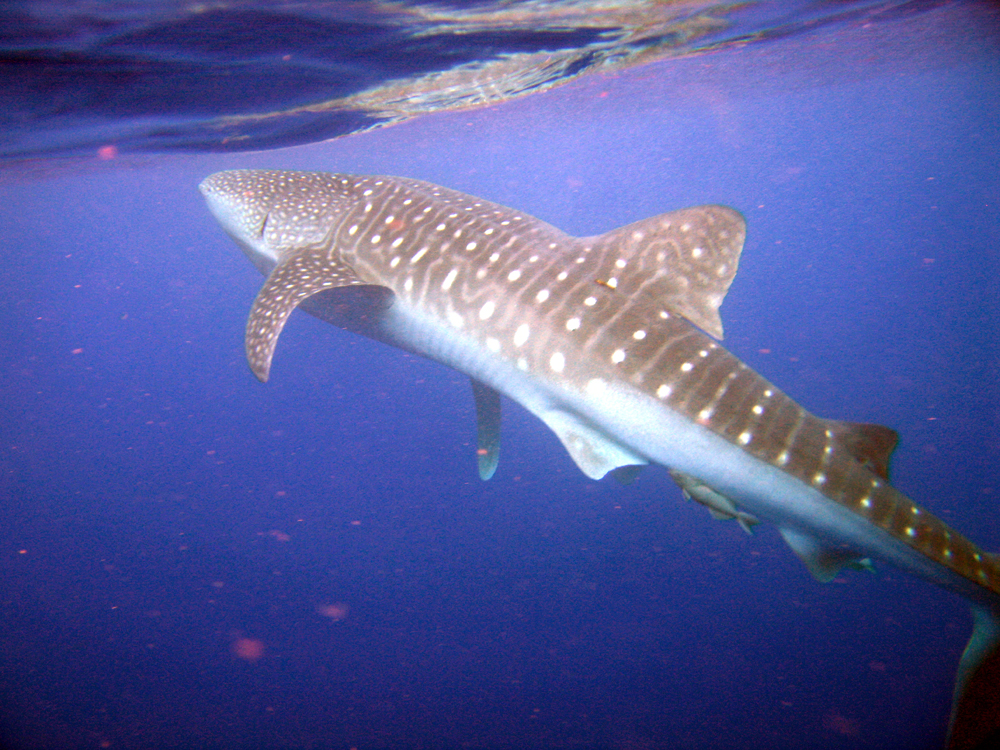|
Elaeis Oleifera
''Elaeis oleifera'' is a species of palm commonly called the American oil palm. It is native to South and Central America from Honduras to northern Brazil. Unlike its relative ''Elaeis guineensis'', the African oil palm, it is rarely planted commercially to produce palm oil Palm oil is an edible vegetable oil derived from the mesocarp (reddish pulp) of the fruit of oil palms. The oil is used in food manufacturing, in beauty products, and as biofuel. Palm oil accounted for about 36% of global oils produced from o ..., but hybrids between the two species are, mainly in efforts to provide disease resistance and to increase the proportion of unsaturated fatty acids in the oil. References {{Taxonbar, from=Q4064203 Cocoseae Oil palm Flora of Honduras Flora of Costa Rica Flora of Nicaragua Flora of Panama Flora of French Guiana Flora of Suriname Flora of Colombia Flora of Peru Flora of Brazil Plants described in 1897 ... [...More Info...] [...Related Items...] OR: [Wikipedia] [Google] [Baidu] |
Carl Sigismund Kunth
Carl Sigismund Kunth (18 June 1788 – 22 March 1850) was a German botanist. He was also known as Karl Sigismund Kunth or anglicized as Charles Sigismund Kunth. He was one of the early systematic botanists who focused on studying the plants of the Americas. Kunth's notable contributions include the publication of ''Nova genera et species plantarum quas in peregrinatione ad plagam aequinoctialem orbis novi collegerunt Bonpland et Humboldt''. This work spanned seven volumes and was published between 1815 and 1825. Early life Kunth was born in Leipzig, Saxony, in modern-day Germany. His uncle, Gottlob Johann Christian Kunth, was a politician and educator who tutored both the explorer Alexander von Humboldt and his older brother, the diplomat Wilhelm von Humboldt, as children. Growing up, Kunth's father didn't have enough money for him to continue studying at the Leipzig Rathsschule. His uncle paid for him to move to Berlin, then a part of Prussia, and take a position at the Pru ... [...More Info...] [...Related Items...] OR: [Wikipedia] [Google] [Baidu] |
Oil Palm
''Elaeis'' () is a genus of palms, called oil palms, containing two species, native to Africa and the Americas. They are used in commercial agriculture in the production of palm oil. Description Mature palms are single-stemmed, and can grow well over tall. The leaves are pinnate, and reach between long. The flowers are produced in dense clusters; each individual flower is small, with three sepals and three petals. The palm fruit is reddish, about the size of a large plum, and grows in large bunches. Each fruit is made up of an oily, fleshy outer layer (the pericarp), with a single seed (the palm kernel), also rich in oil. Species The two species, '' E. guineensis'' (Africa) and '' E. oleifera'' (Americas) can produce fertile hybrids. The genome of ''E. guineensis'' has been sequenced, which has important implications for breeding improved strains of the crop plants. Distribution and habitat ''E. guineensis'' is native to west and southwest Africa, occurr ... [...More Info...] [...Related Items...] OR: [Wikipedia] [Google] [Baidu] |
Flora Of Peru
Peru has some of the greatest biodiversity in the world. It belongs to the select group of mega diverse countries because of the presence of the Andes, Amazon rainforest, and the Pacific Ocean. It has the fourth-most tropical forests of any country and the ninth-most forest area. The country is ranked among the five countries with the greatest biodiversity in the world according to various studies. Natural protected areas The 1993 Constitution of Peru recognized the natural resources and ecosystems of Peru as part of its heritage. In 1999, the National System of Natural Areas Protected by the State () was established by the Peruvian government. SINANPE consists of natural areas under national administration, managed and overseen by the National Service of Natural Protected Areas by the State (SERNANP). They also created a map of protection and preservation of historical–cultural heritage and nature. Peru has 76 natural protected areas (more of 15% of the country surface ar ... [...More Info...] [...Related Items...] OR: [Wikipedia] [Google] [Baidu] |
Flora Of Colombia
The Flora of Colombia is characterized by over 32,000 species of green plants. National Flower of Colombia The national flower of Colombia is the orchid '' Cattleya trianae'' which was named after the Colombian naturalist José Jerónimo Triana. The orchid was selected by botanist Emilio Robledo, in representation of the Colombian Academy of History to determine the most representative flowering plant of Colombia. He described it as one of the most beautiful flowers in the world and selected ''Cattleya trianae'' as National symbol. National Tree of Colombia The national tree of Colombia is the palm '' Ceroxylon quindiuense'' (Quindío wax palm) which was named after the Colombian Department of Quindío where is located the Cocora valley, the only habitat of this restricted range species. The Quindío wax palm was selected as the national tree by the government of Belisario Betancur and was the first tree officially declared as a protected species in Colombia. ''C.quindi ... [...More Info...] [...Related Items...] OR: [Wikipedia] [Google] [Baidu] |
Flora Of Suriname
The biodiversity of Suriname is high, mostly because of the variety of habitats and warm temperatures. The average annual temperature in the coastal area is between 26° and 28°C. Suriname can be divided into four major ecological zones, namely from north to south; # The young coastal plain # The old coastal plain # The Savannah or Zanderij belt # The interior residual uplands Habitats and species The coast of Suriname is wild and consists of mud banks, sand beaches, mangrove forests and lagoons. The Guiana current flows along the coast of Suriname. The North Brazil Current, a warm water ocean current, is renamed as the Guiana current. The confusion surrounding its name is due partly to the seasonal change in flow of nearby currents. The mangrove forests have only one story with a height of 20–25 meters. They are almost completely homogeneous and dominated by black mangrove (''Avicenna germinans''). The mangrove forests are important as staging and wintering areas for birds ... [...More Info...] [...Related Items...] OR: [Wikipedia] [Google] [Baidu] |
Flora Of French Guiana
Flora (: floras or florae) is all the plant life present in a particular region or time, generally the naturally occurring ( indigenous) native plants. The corresponding term for animals is ''fauna'', and for fungi, it is '' funga''. Sometimes bacteria and fungi are also referred to as flora as in the terms ''gut flora'' or ''skin flora'' for purposes of specificity. Etymology The word "flora" comes from the Latin name of Flora, the goddess of plants, flowers, and fertility in Roman mythology. The technical term "flora" is then derived from a metonymy of this goddess at the end of the sixteenth century. It was first used in poetry to denote the natural vegetation of an area, but soon also assumed the meaning of a work cataloguing such vegetation. Moreover, "Flora" was used to refer to the flowers of an artificial garden in the seventeenth century. The distinction between vegetation (the general appearance of a community) and flora (the taxonomic composition of a community) wa ... [...More Info...] [...Related Items...] OR: [Wikipedia] [Google] [Baidu] |
Flora Of Panama
Panama is a country located in Central America, bordering both the Caribbean Sea and the Pacific Ocean, between Colombia and Costa Rica. Panama is located on the narrow and low Isthmus of Panama. This S-shaped isthmus is situated between 7° and 10° north latitude and 77° and 83° west longitude. Panama encompasses approximately . It is long, and between wide. Geology The Cocos and Nazca plates formed in the Miocene. The Panama microplate is made of oceanic crust basalt, similar to the basalt plateau at the bottom of the Caribbean Sea. The isthmus of Panama formed due to convergent tectonics of the eastern Pacific subduction zone, which created a magmatic arc extending from southern North America. The center of the isthmus, from Arenal Volcano in Costa Rica to El Valle volcano in Panama was uplifted during the subduction of the unusually thick Cocos Ridge oceanic crust, which also produced the four kilometer high Talamanca Range. The western edge of the Caribbean Pl ... [...More Info...] [...Related Items...] OR: [Wikipedia] [Google] [Baidu] |
Flora Of Nicaragua
Flora (: floras or florae) is all the plant life present in a particular region or time, generally the naturally occurring ( indigenous) native plants. The corresponding term for animals is ''fauna'', and for fungi, it is '' funga''. Sometimes bacteria and fungi are also referred to as flora as in the terms ''gut flora'' or ''skin flora'' for purposes of specificity. Etymology The word "flora" comes from the Latin name of Flora, the goddess of plants, flowers, and fertility in Roman mythology. The technical term "flora" is then derived from a metonymy of this goddess at the end of the sixteenth century. It was first used in poetry to denote the natural vegetation of an area, but soon also assumed the meaning of a work cataloguing such vegetation. Moreover, "Flora" was used to refer to the flowers of an artificial garden in the seventeenth century. The distinction between vegetation (the general appearance of a community) and flora (the taxonomic composition of a community) wa ... [...More Info...] [...Related Items...] OR: [Wikipedia] [Google] [Baidu] |
Flora Of Costa Rica
Costa Rica, officially the Republic of Costa Rica, is a country in Central America. It borders Nicaragua to the north, the Caribbean Sea to the northeast, Panama to the southeast, and the Pacific Ocean to the southwest, as well as maritime border with Ecuador to the south of Cocos Island. It has a population of around five million in a land area of nearly . An estimated people live in the capital and largest city, San José, with around two million people in the surrounding metropolitan area. The sovereign state is a presidential republic. It has a long-standing and stable constitutional democracy and a highly educated workforce. The country spends roughly 6.9% of its budget (2016) on education, compared to a global average of 4.4%. Its economy, once heavily dependent on agriculture, has diversified to include sectors such as finance, corporate services for foreign companies, pharmaceuticals, and ecotourism. Many foreign manufacturing and services companies operate in Costa ... [...More Info...] [...Related Items...] OR: [Wikipedia] [Google] [Baidu] |
Flora Of Honduras
The flora and fauna of Honduras reflects the country's geographical location inside the tropics. This has allowed for diverse species of plants and animals to be adapted, but some of them are now in danger of extinction. This has posed the Honduran government, offices and nature organizations to look after the protection of the local environment, like the creation of nature reserves. Flora The flora of Honduras is varied. Pluvioselva, classified a tropical rain forest, is one of its most impressive vegetal populations. Ecologists designated it "Hygrophilous Megatherm Type", for corresponding to regions of high humidity and constant high temperatures, with a single dominant species, like pines or firs, covering big areas. The eastern part of the country, '' La Mosquitia'', has many creeper and climbing plants, such as lianas. There is a great variety of epiphytes, most strikingly the orchids. Adapted to the humid environment, trees are enormous and do not possess deep roots, b ... [...More Info...] [...Related Items...] OR: [Wikipedia] [Google] [Baidu] |
Cocoseae
Cocoseae is a tribe (biology), tribe of cocosoid palms of the family Arecaceae. Description The fruit of the Cocoseae is a modified drupe, with a sclerenchymatous epicarp and a highly developed mesocarp, formed mainly by parenchyma . The endocarp is generally sclerenchymatous and protects the seeds from predation and drying. The most obvious synapomorphy of the species of this tribe is the presence, in the endocarp, of three or more "eyes" or pores of germination. According to Thomas C. Whitmore all Cocosoid palms have inflorescences in which the flowers are in triads (sets of three flowers). Distribution The Cocoseae are distributed mainly in the Neotropical regions, with two genera endemic to Africa (''Jubaeopsis'' and ''Elaeis'') and Madagascar (''Beccariophoenix'' and ''Voanioala''), respectively. Systematics The Cocoseae in the sense of Dransfield et al. (2008) are identified as natural relatives (monophylum) in most studies. Their systematic position within the Arecoideae ... [...More Info...] [...Related Items...] OR: [Wikipedia] [Google] [Baidu] |
Santiago Cortés (botanist)
Santiago Cortés may refer to:\ * Santiago Cortés (botanist) (1854–1924), see ''Elaeis ''Elaeis'' () is a genus of palms, called oil palms, containing two species, native to Africa and the Americas. They are used in commercial agriculture in the production of palm oil. Description Mature palms are single-stemmed, and can grow ...'' * Santiago Cortés (footballer) * Santiago Cortés (musician) * Santiago Cortés Sandoval (born 1944), Mexican politician {{hndis, Cortes, Santiago ... [...More Info...] [...Related Items...] OR: [Wikipedia] [Google] [Baidu] |






